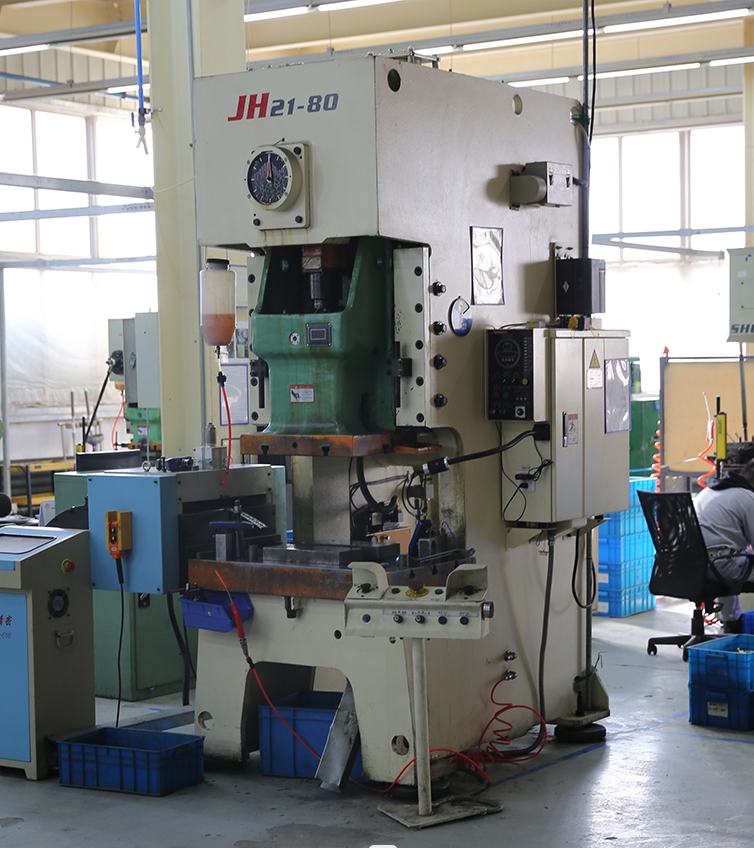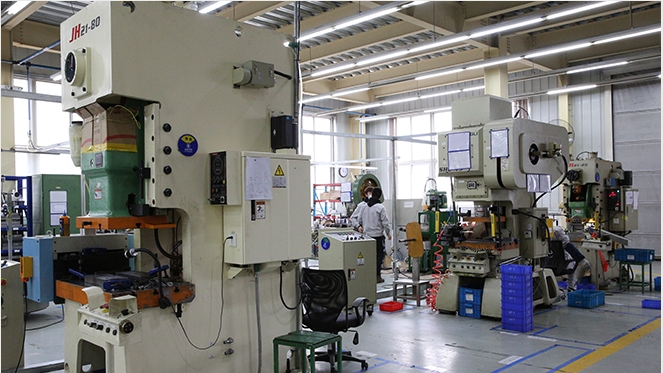

Automotive stamping parts precision machining journey
Release time:2023-12-08
Automotive stamping parts precision machining journey
In modern industrial production, the processing of automotive stamping parts is a crucial task. They not only play a key role in the automobile manufacturing process, but also have a direct impact on the performance and safety of the automobile. So, how are car stamping parts processed? Let's step into this world of precision and explore the processes and technologies behind it.
First of all, we need to understand what stamping parts are. A stamped part is a part that plastic deforms a sheet metal through a press and a die to obtain the desired shape and size. This process has the advantages of high production efficiency, low cost and high precision, so it is widely used in automobile manufacturing.

The process of automotive stamping parts processing can be divided into several main steps: material selection, mold design, stamping process, post-processing and quality inspection.
In the material selection stage, engineers need to select the appropriate metal materials according to the use environment and performance requirements of the parts. Commonly used materials are low carbon steel, stainless steel, aluminum alloy and so on. These materials have good stamping and welding properties and can meet the requirements of automotive parts.
Die design is the key step of stamping parts processing. Designers need to design an accurate mold according to the shape and size of the part. This process needs to consider many factors, such as the elastic modulus of the material, yield strength, hardening index, etc. Only by designing a precise mold can the quality of the stamping parts be guaranteed.

Stamping is the process of machining sheet metal into stamping parts. This process includes blanking, drawing, flanging, punching and other steps. Each step requires precise control of the press pressure and speed to ensure the shape and size of the part.
Post-treatment is the heat treatment, surface treatment and other steps of stamping parts to improve their performance and appearance. Common post-treatment methods are quenching, tempering, galvanizing, painting and so on.
Finally, quality inspection is an important link to ensure the quality of stamping parts. Engineers need to use a variety of testing equipment, such as hardness tester, microscope, coordinate measuring machine, etc., to carry out a comprehensive test of stamping parts. Only through strict quality inspection, can we ensure the quality of stamping parts.

In general, the processing of automotive stamping parts is a complex and precise work that requires engineers to have a wealth of knowledge and skills. However, it is precisely this precision process that allows us to enjoy a safe and comfortable car life.
In modern industrial production, the processing of automotive stamping parts is a crucial task. They not only play a key role in the automobile manufacturing process, but also have a direct impact on the performance and safety of the automobile. So, how are car stamping parts processed? Let's step into this world of precision and explore the processes and technologies behind it.
First of all, we need to understand what stamping parts are. A stamped part is a part that plastic deforms a sheet metal through a press and a die to obtain the desired shape and size. This process has the advantages of high production efficiency, low cost and high precision, so it is widely used in automobile manufacturing.

The process of automotive stamping parts processing can be divided into several main steps: material selection, mold design, stamping process, post-processing and quality inspection.
In the material selection stage, engineers need to select the appropriate metal materials according to the use environment and performance requirements of the parts. Commonly used materials are low carbon steel, stainless steel, aluminum alloy and so on. These materials have good stamping and welding properties and can meet the requirements of automotive parts.
Die design is the key step of stamping parts processing. Designers need to design an accurate mold according to the shape and size of the part. This process needs to consider many factors, such as the elastic modulus of the material, yield strength, hardening index, etc. Only by designing a precise mold can the quality of the stamping parts be guaranteed.

Stamping is the process of machining sheet metal into stamping parts. This process includes blanking, drawing, flanging, punching and other steps. Each step requires precise control of the press pressure and speed to ensure the shape and size of the part.
Post-treatment is the heat treatment, surface treatment and other steps of stamping parts to improve their performance and appearance. Common post-treatment methods are quenching, tempering, galvanizing, painting and so on.
Finally, quality inspection is an important link to ensure the quality of stamping parts. Engineers need to use a variety of testing equipment, such as hardness tester, microscope, coordinate measuring machine, etc., to carry out a comprehensive test of stamping parts. Only through strict quality inspection, can we ensure the quality of stamping parts.

In general, the processing of automotive stamping parts is a complex and precise work that requires engineers to have a wealth of knowledge and skills. However, it is precisely this precision process that allows us to enjoy a safe and comfortable car life.
